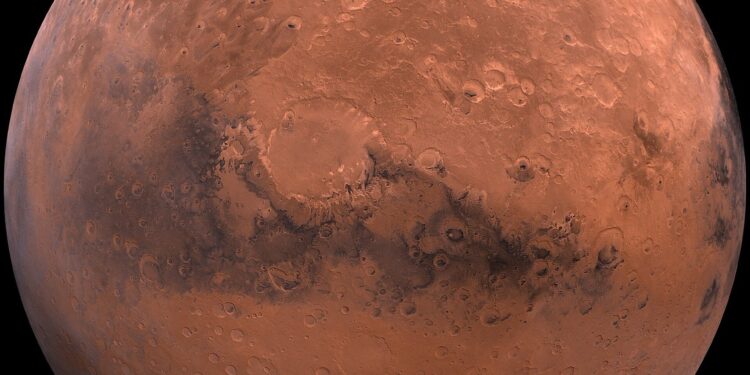Credit: Pixabay/CC0 Public domain
When NASA’s Curiosity Mars rover isn’t moving, it works quite well as a sundial, as shown in two black-and-white videos recorded on November 8, the 4,002nd Martian day or sol of the mission. The rover captured its own shadow moving across the surface of Mars using its black-and-white hazard avoidance cameras, or Hazcams.
The instructions to record the videos were part of the final series of commands transmitted to Curiosity just before the start of Mars’ solar conjunction, a period when the sun is between Earth and Mars. Because plasma from the sun can interfere with radio communications, missions wait several weeks before sending commands to the Martian spacecraft. (The missions weren’t totally disconnected: they still radioed back regular health checks throughout the conjunction.)
Rover drivers normally rely on Curiosity Hazcams to spot rocks, slopes and other hazards that may be risky to navigate. But because the rover’s other activities were intentionally curtailed just before the conjunction, the team decided to use the Hazcams to record 12 hours of snapshots for the first time, hoping to capture clouds or dust swirls that could reveal more about the Red Planet’s weather.
When the images descended to Earth after the conjunction, the scientists observed no notable weather, but the two 25-frame videos they collected capture the passage of time. Spanning from 5:30 a.m. to 5:30 p.m. local time, the videos show Curiosity’s silhouette changing as the day moves from morning to afternoon and evening.
The first video, featuring footage from the Hazcam front, looks southeast along Gediz Vallis, a valley located on Mount Sharp. Curiosity has been climbing the base of the 5-kilometer-high mountain, which is located in Gale Crater, since 2014.
As the sky brightens at sunrise, the shadow of the rover’s 2-meter robotic arm shifts to the left and Curiosity’s front wheels emerge from the darkness on either side of the frame. A circular calibration target mounted on the shoulder of the robotic arm also becomes visible on the left. Engineers are using the target to test the accuracy of the Alpha Particle X-ray Spectrometer, an instrument that detects chemical elements on the Martian surface.
In the middle of the day, the front-facing Hazcam’s automatic exposure algorithm sets exposure times of around a third of a second. As night falls, this exposure time reaches over a minute, causing the typical sensor noise known as “hot pixels” which appears as white snow in the final image.
The second video shows the view from the rear Hazcam as it looks northwest over the slopes of Mount Sharp to the bottom of Gale Crater. The rover’s right rear wheel is visible, along with the shadow of Curiosity’s power system. A small black artifact that appears on the left in the middle of the video, during the 17th frame, is the result of a cosmic ray hitting the camera’s sensor.
Likewise, the light flashing and other noises at the end of the video are the result of heat from the spacecraft’s power system affecting the Hazcam’s image sensor.
These images were reprojected to correct the wide angle lenses of the Hazcams. The speckled appearance of the images, particularly visible in the rear camera video, is due to 11 years of Martian dust depositing on the lenses.
Quote: Curiosity captures a Martian day, from dawn to dusk (December 29, 2023) retrieved December 29, 2023 from
This document is subject to copyright. Apart from fair use for private study or research purposes, no part may be reproduced without written permission. The content is provided for information only.



